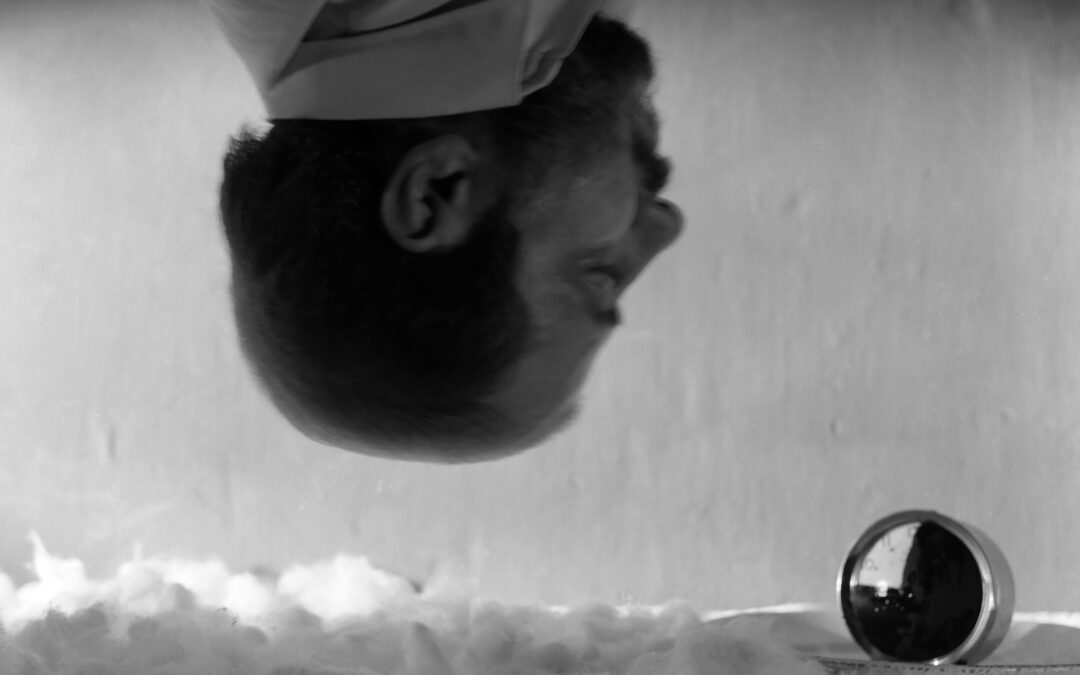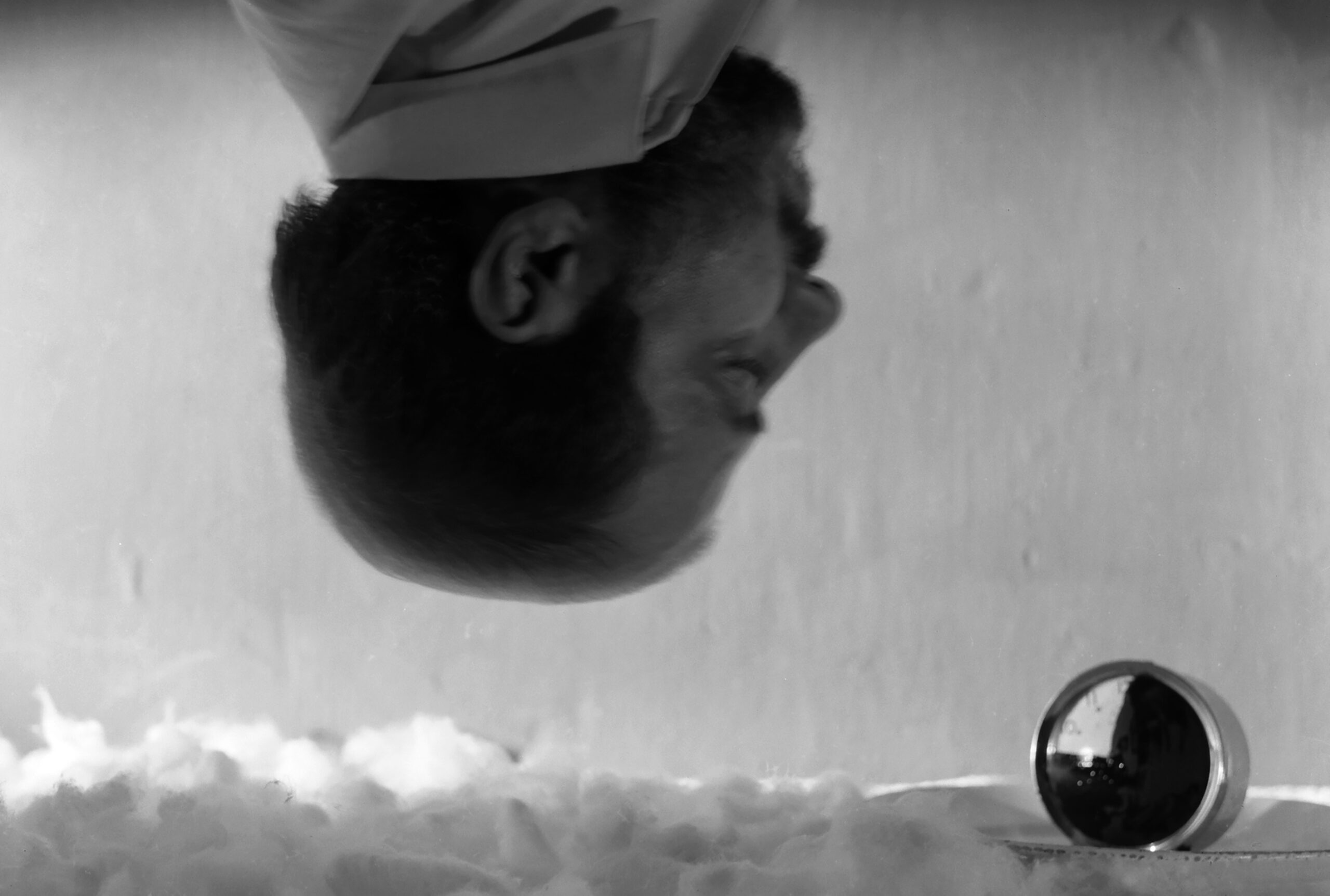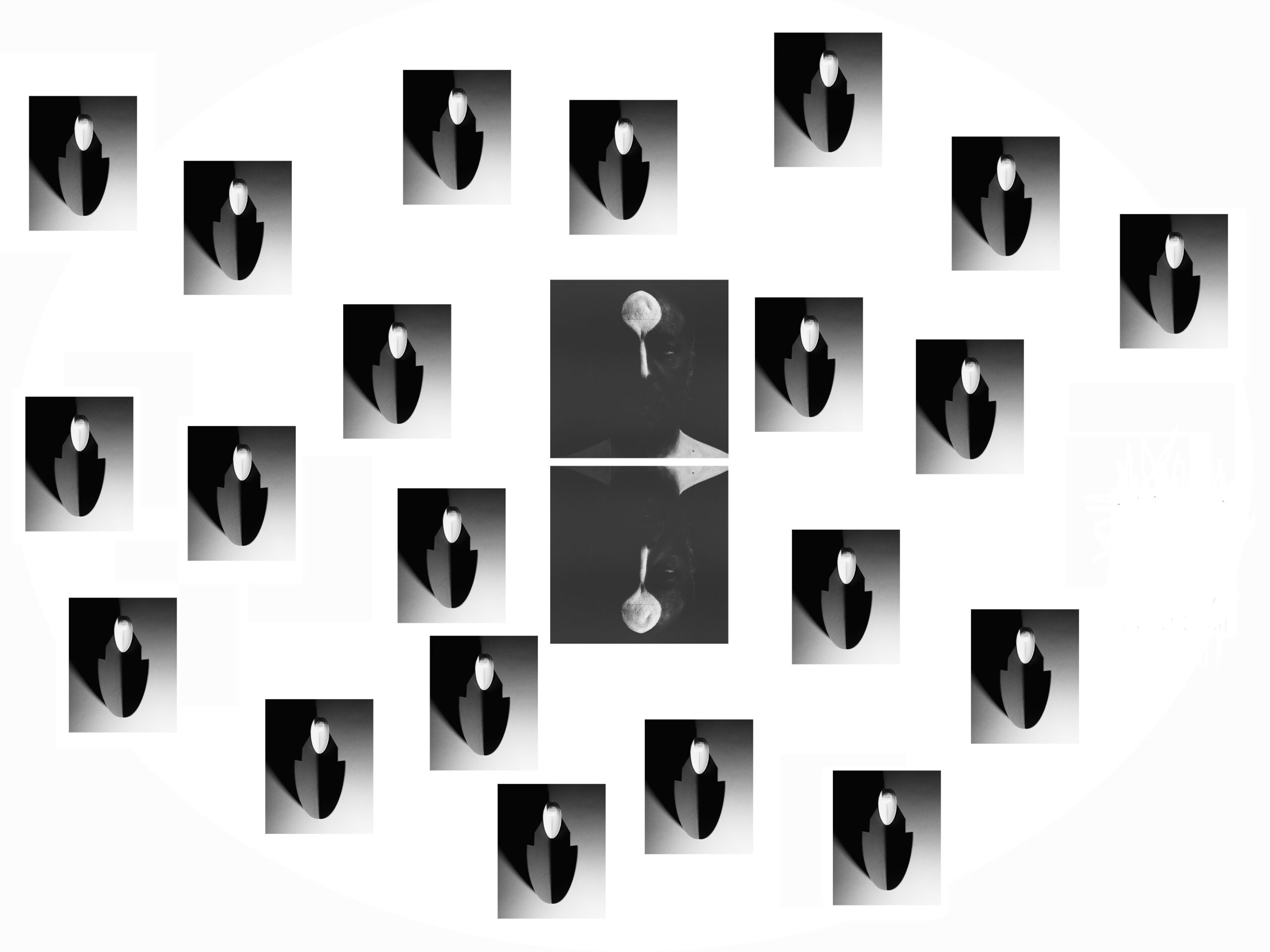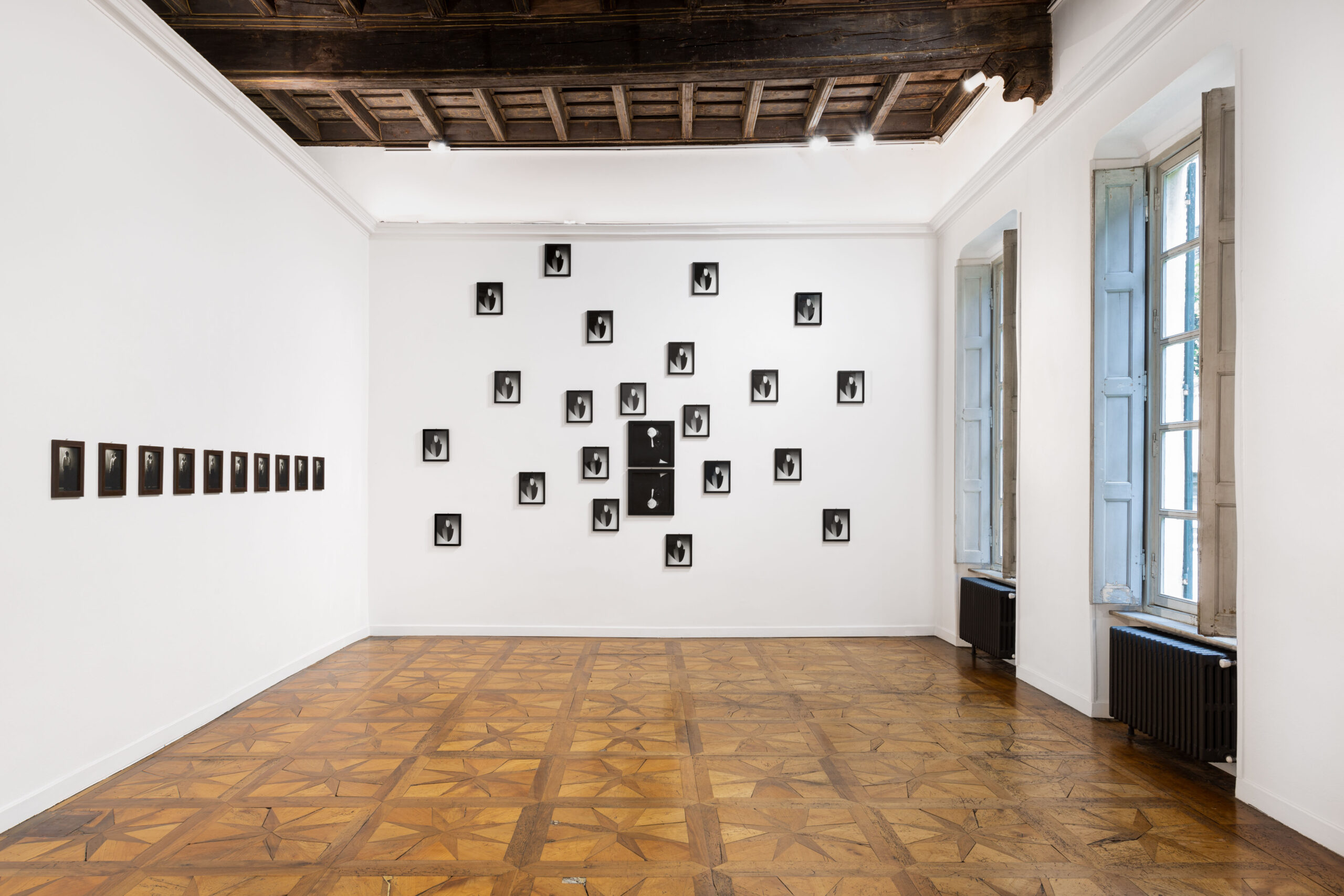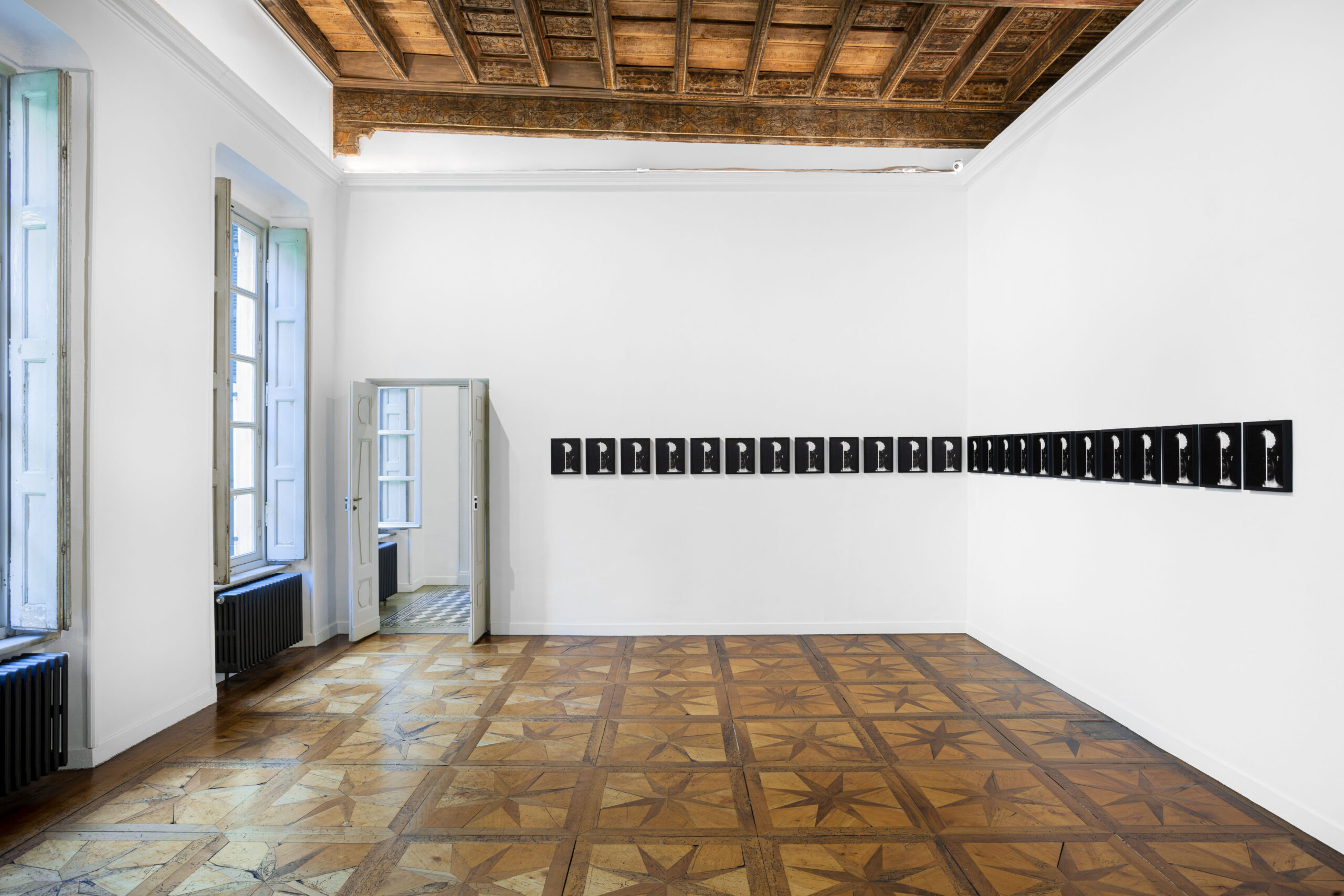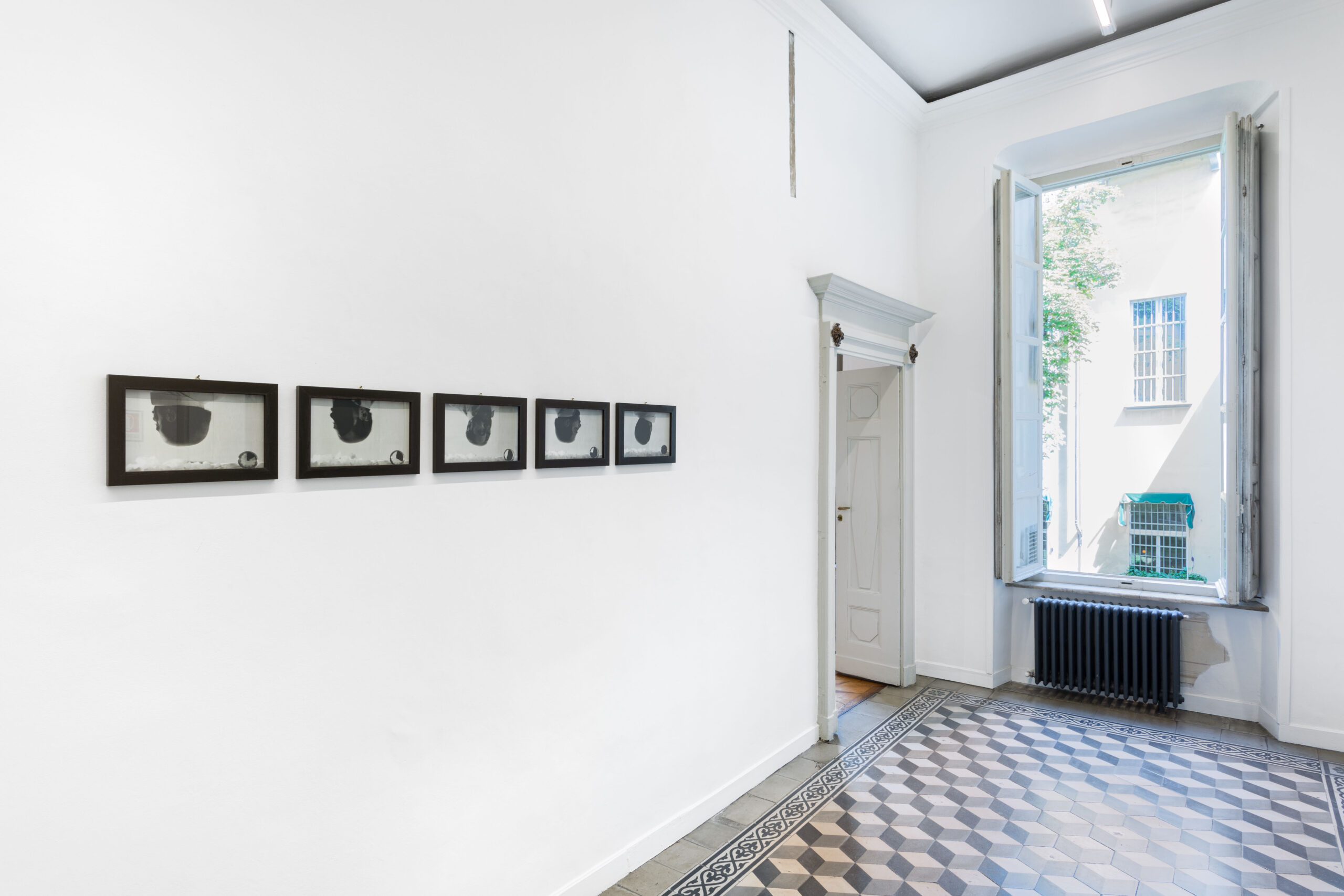Press release
MICHELE ZAZA
La radice del silenzio
28 May – 29 July 2022
Public opening 28 May 2022 | 4 p.m.
After the 2013 exhibition, Giorgio Persano is happy to present a new solo exhibition by Michele Zaza on the first floor of Palazzo Scaglia di Verrua in Turin, entitled ‘La radice del silenzio’ (The root of silence), realized in collaboration with the Artist and his Archive.
The exhibition offers a dialogue full of cross-references between some works with black and white photographs from 1974 and 1975 and a particular period of the artist’s research dating back to the mid-1990s.
While in the works of the 1970s the ‘personal and family theatre’ of an existentialist chamber piece is evident, the works of the 1990s – again in black and white – present a more abstract and ciphered form, concentrating on the face in the foreground juxtaposed with sculptural forms of a Cycladic appearance, themselves photographed.
Since 1974 Zaza has produced several photographic series under the title Mimesi (Mimesis), in which he himself often appears suspended upside down: “My floor was not the earth, but the sky: I ideally rested my feet on the ground of the sky, and not on the ground of the earth. The cotton wool is a metaphor for this. There is a desire to be sky, to be the universe”.
In one work on display in the exhibition (Mimesi, 5 photos) we see the upturned and partially blackened head swinging downwards, describing a 360-degree arc. The weight presses down and the soft cotton wool contrasts with it. In correspondence with the different inclinations of the head there is the passage of time indicated by the alarm clock, with the dial gradually erasing itself.
In yet other works existence and absence, time and the unknown, are compared. The face of the artist’s father painted dark in the Mimesi comprising 7 photographs, becomes a rite in the passage towards a totally dreamlike dimension without body.
Darkness and black on the face return in predominant manner in the 1990s. In the works of 1997, such as Il centro del respiro (The centre of breathing; 23 black and white photos), Corpo centrale (Central body; 3 black and white photos), La radice del silenzio (The root of silence; 24 black and white photos), La via del respiro (The way to breathing; 4 black and white photos), we witness a dry and incisive formal vocabulary, where the face acquires centrality and is continually confronted with an imaginary image (of an object), an invented body, in a unique and ‘metaphysical’ dimension.
In Zaza’s works, therefore, there is an ideal path towards a timeless symbolic body: from his 1974-1975 upside-down figure (head down), to the sculptural presence of faces that appear from the depths of black.
As Michele Zaza stresses, what also emerges in his works is “the evocation, recomposition and embodiment of a lost unity” that always urges “the mind to rebel against the idea of masculine and feminine”.
The abstract form that we see in the photographs, as also the face of the artist, or the female face in Corpo centrale, emerge from the darkness of silence, which for Zaza is “silence of thought”: a meditative, absolute time, which also brings a circular time in its train, as in the work La radice del silenzio, which gives the exhibition its title.
The 24 black and white photos show the artist’s face crossed vertically (cutting it in two) by a sort of axis bearing a large white cotton wool flower, a metaphor for breath, for light and lightness. The repetition of the 24 faces expresses the scanning of the 24 hours of a day, their cyclical nature. In fact, “it is circular time: man disappears and then is endlessly reborn, perpetuating himself. A time that philosophically can be defined as the moving image of motionless eternity.”
In both the mid-1970s and mid-1990s, Michele Zaza thus transforms existence from material to immaterial and vice versa. The faces try to emerge from the darkness or to inhabit it. The works seem to propose a double that moves between black substance and an illuminating energy, with sometimes a hidden light source bathing the scene with light and revealing the parts.

